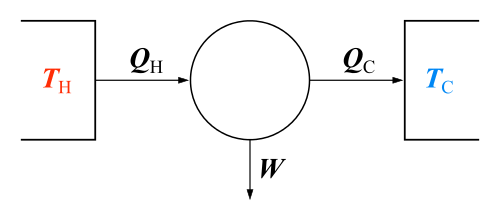Pseudo Stirling cycle
| Thermodynamics | ||||||||||||
|---|---|---|---|---|---|---|---|---|---|---|---|---|
 The classical Carnot heat engine | ||||||||||||
|
||||||||||||
| Book:Thermodynamics | ||||||||||||
The pseudo Stirling cycle, also known as the adiabatic Stirling cycle, is a thermodynamic cycle with an adiabatic working volume and isothermal heater and cooler, in contrast to the Stirling cycle with an isothermal working space.[1] The working fluid has no bearing on the maximum thermal efficiencies of the pseudo Stirling cycle.[2]
History
The pseudo Stirling cycle was designed to address predictive shortcomings[2] in the ideal isothermal Stirling cycle. Specifically, the ideal cycle does not give usable figures or criteria for judging the performance of real-world Stirling engines.
See also
References
- ↑ "Brief History of Stirling Machines" (PDF). . Archived from the original (PDF) on 10 April 2008. Retrieved 18 May 2008. External link in
|publisher=(help) - 1 2 Reader, G. T. (1978). "The Pseudo Stirling cycle - A suitable performance criterion". Intersociety Energy Conversion Engineering Conference, 13th, San Diego, Calif., August 20–25, 1978, Proceedings, Vol. 3. Society of Automotive Engineers, Inc. pp. 1763–1770. Bibcode:1978iece....3.1763R.
External links
- Abstract of "The Pseudo Stirling cycle - A suitable performance criterion"
- Brief History of Stirling Machines p. 4 and on
This article is issued from
Wikipedia.
The text is licensed under Creative Commons - Attribution - Sharealike.
Additional terms may apply for the media files.